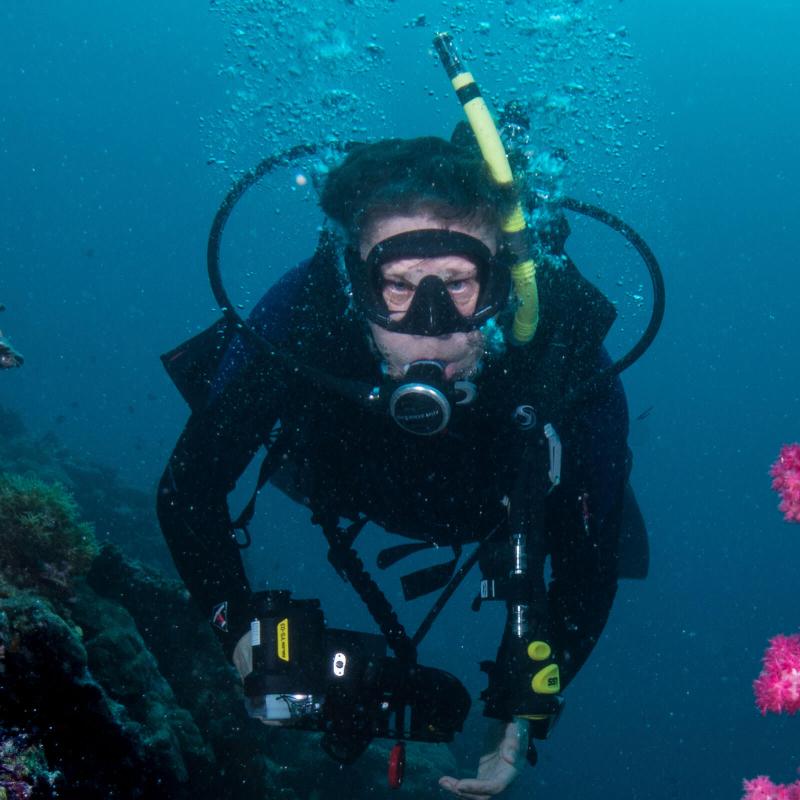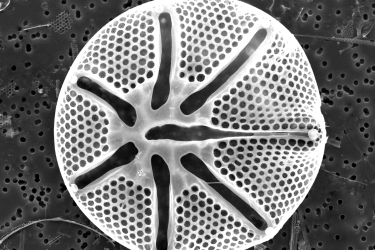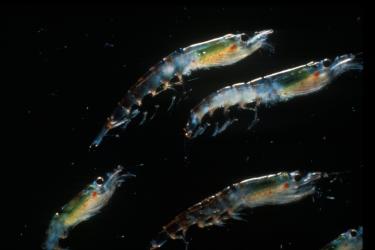One of the tools aboard the Shimada is the Acoustic Doppler Current Profiler, or ADCP. The ADCP is an echosounder system with 4 transducers, each angled 30 degrees down into the water. Like points on a compass rose, each transducer aims in one of the ship's primary directions: fore (forward), aft (back), starboard (right), and port (left). This is a "Janus" configuration, named after the ancient Roman God with two faces that each looked in opposite directions.
The idea behind the ADCP is simple. Have you ever heard the whistle on a passing train? As the train and its whistle approaches, we hear the whistle as a high pitched note. Once it has passed and the whistle is moving away, the whistle is heard as a lower pitch. The whistle hasn't changed, but the pitch has changed relative to our ear. This change is called a Doppler shift, and it is the difference in the sound frequency-- the number of waves hitting your ear in a given time -- that you hear as the whistle is moving towards you, or away from you.
Now imagine the Shimada, sailing along, with the four ADCP transducers pinging into the water, one for each of the ship's primary directions. There are many particles in the water, in all directions: things like zooplankton or broken seaweed. These particles are suspended in the water and thus moving at the same speed as the water-- a key assumption for the ADCP. Some of the energy from the ADCP's pings are reflected back by these particles and the ADCP transducers hear the echoes. Special software built for the ADCP by a team at the University of Hawaii, termed UHDAS, then uses data from the ship's navigation system to subtract out the ship's motion and determine the Doppler shift for those particles. We then process that information through UHDAS and ultimately describe the speed and direction of the area's ocean currents.
Ocean currents are useful information as we seek to better understand the ecology of the California Current Ecosystem. Life in the ocean is patchy, and ocean currents influence how and where animals are distributed. One of our ongoing collaborations uses ADCP current data for modeling (and perhaps predicting) Pacific Hake distribution.

ADCP contour plot showing current vectors along Shimada's course as she surveys back and forth over the continental shelf. The top panel shows the East-West component, and the bottom panel shows the North-South component. The depth (in meters) is on the left, and the color scale for current direction and speed (meters/sec) is on the right. The splash of red near the center of the lower panel is the ADCP capturing a strong current. The current is nearly slack as an East-West vector (upper panel), but is very strong in its northward flow. This is a cross-section of the California Undercurrent. Photo: NOAA Fisheries


